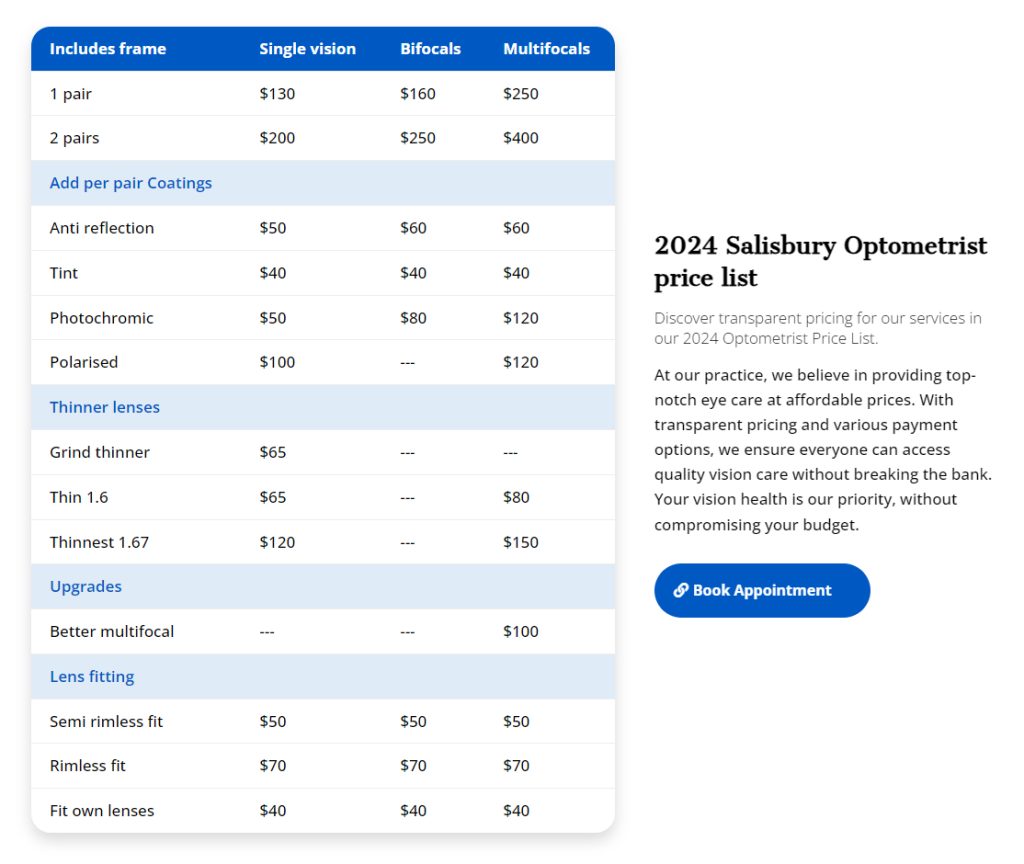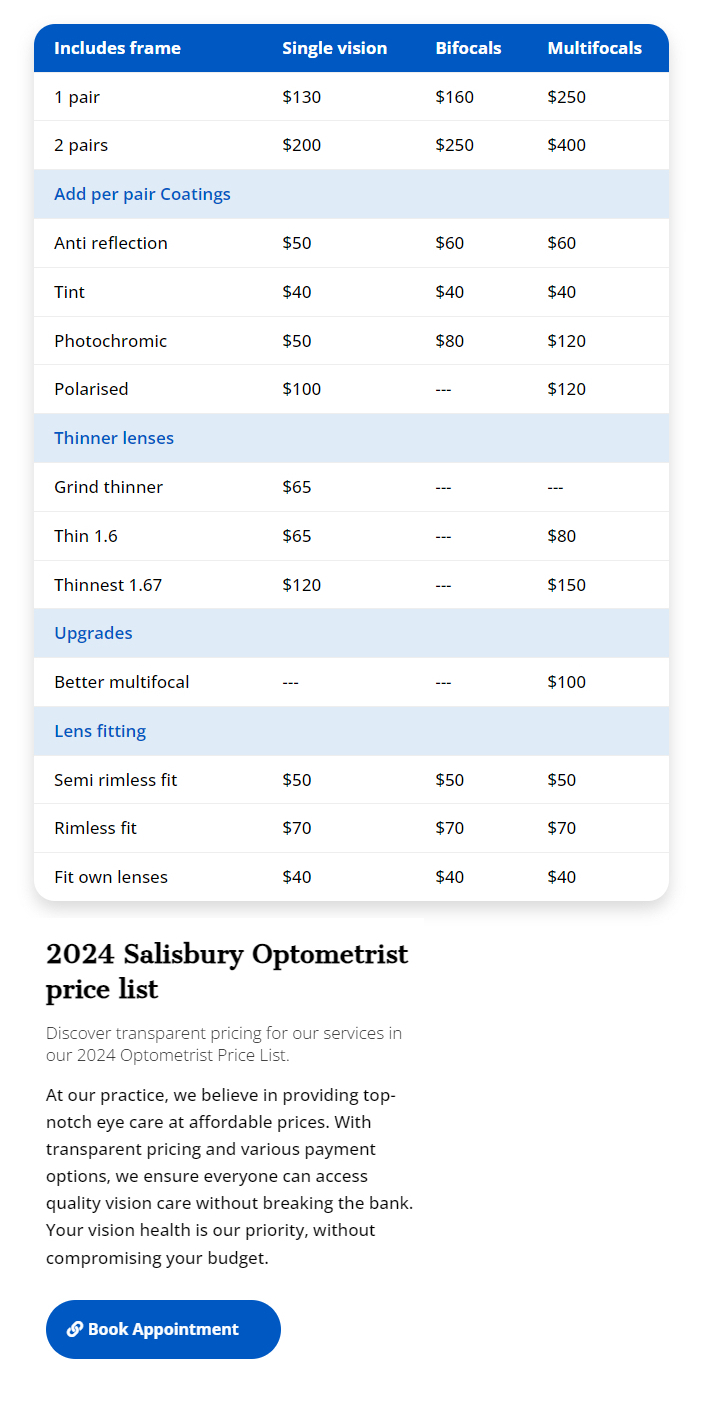Progressive glasses, also known as progressive addition lenses (PAL), progressive power lenses, graduated prescription lenses, and others, are a version of bifocal and trifocal lenses. Where they differ from the multifocal lenses is that they do not have a demarcation line separating the fields of vision.
Progressive lenses provide a seamless look, as there are no lines in the glasses. Owing to the absence of lines, they are sometimes called no-line bifocals.
Progressive glasses have three prescriptions in one pair of glasses, allowing all three ranges of vision: distance vision, such as for driving a car; near-range vision, such as for reading a book; and middle-range vision, such as for working on a computer. The benefit of a progressive lens is that you won’t have to change your glasses for these three vision ranges.
Progressive lenses are used to correct accommodation disorders such as presbyopia and others. Because they do not have a visible separation between segments, they look just like a usual glass.
Having said that, these lenses share their set of pros and cons. In this blog, we will share them to help you make an informed decision.
Pros of Progressive Glasses
Owing to their design and how they are made, progressive lenses have a number of advantages over usual multifocal lenses.
1. One pair of eyeglasses for everything
With progressive lenses, you won’t need different glasses for different viewing purposes. These lenses have three prescriptions in one. Thus, you won’t need to change your glasses frequently for different viewing purposes. Progressive glasses are, thus, in effect, one pair of glasses for everything.
2. No distracting bifocal line
The main problem with a bifocal or trifocal glass is the presence of a line of separation, demarcating the different areas of vision. This can be problematic, even dangerous while conducting crucial tasks such as driving. In contrast, progressive lenses offer a seamless transition in vision and thus allow you to use your glasses in a more natural manner.
3. A modern and stylish lens
Glasses are an extension of your natural looks, and a sharp line of demarcation, as found in bifocals or trifocals, simply do not appear good. This fact can make you a bit self-conscious if you prefer to look stylish or pair your glasses with a modern outfit. In contrast, progressive glasses look just like usual glasses with no line of demarcation, and you can sport them in a stylish manner. Thus, these glasses have found a place in the minds and looks of modern and stylish people.
Cons of Progressive Glasses
Progressive lenses have a lot of advantages, but they also have some disadvantages, including:
1. It takes time to adjust
Viewing through progressive lenses takes time, and you need to adjust a few times before you get used to it. You have to train your eyes to view different distances through the glasses. During this learning period, you may feel dizziness, nausea, or headaches because you are viewing through the wrong area of the lens. This is a temporary issue, as most people adjust fairly quickly to view through the different areas of the lens.
2. Visual distortions
The gradient in progressive glasses can sometimes distort your vision just out of the periphery. This can cause problems, particularly when doing tasks like climbing stairs or stepping up curbs.
The bottom section of the glass is used for viewing nearby objects. So, when you look at your feet, it will appear larger, which will make gauging your steps a bit difficult.
3. Higher Cost
Compared to multifocal lenses, progressive lenses are usually costlier. Thus, if you are looking for affordable eyeglasses, you will be better off with the traditional bifocal or trifocal glass.
Takeaway
Progressive glasses are a modern addition to glasses for vision correction. They offer a number of benefits. They are modern, stylish glasses, and you can use them for viewing all ranges of objects – near, far, and in the middle. However, they also have some disadvantages, but the pros far outweigh the cons. So, for a modern viewing experience, you can always opt for progressive lenses that offer you a clear and seamless experience.




0 Comments